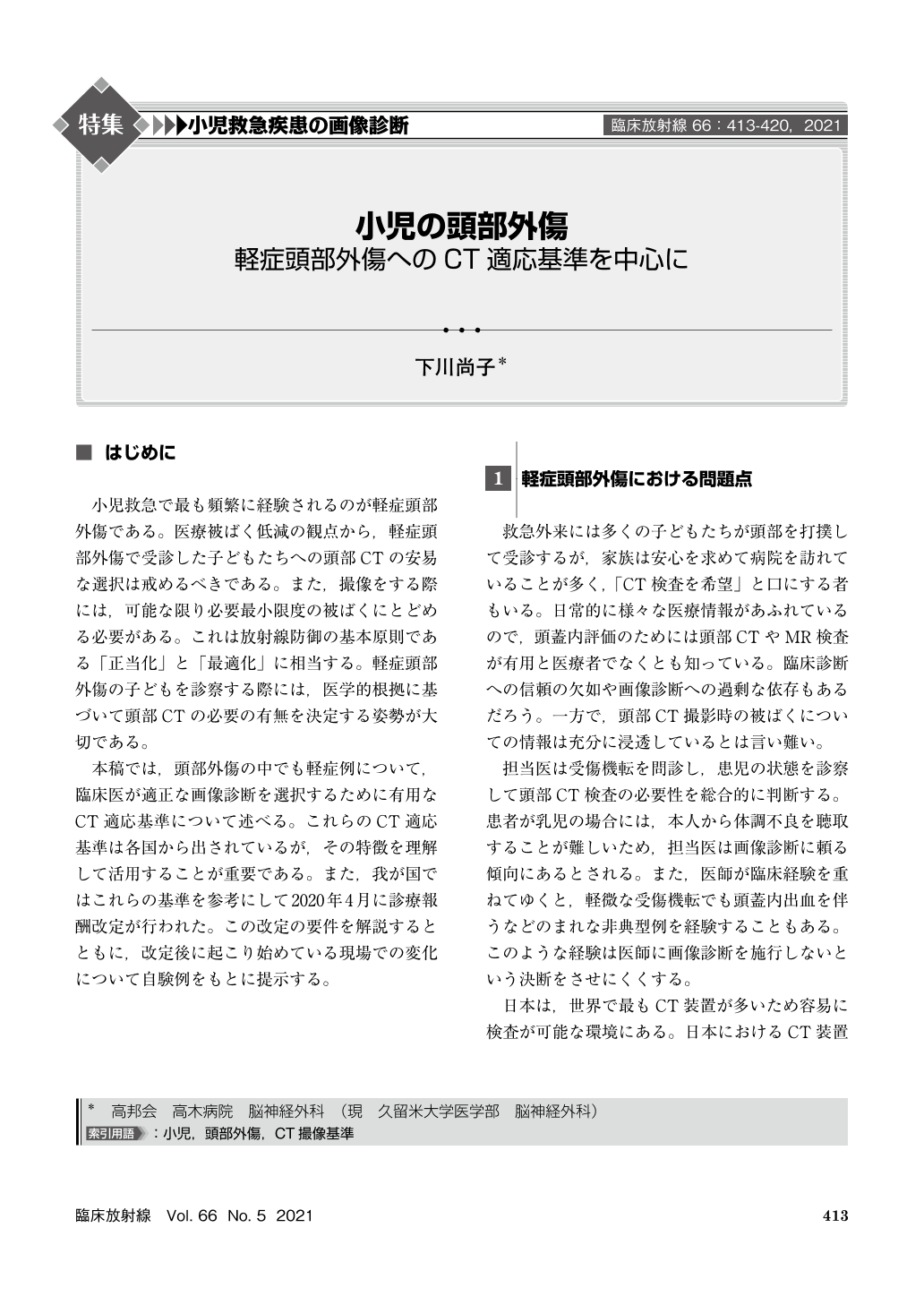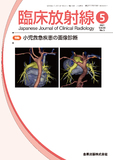Japanese
English
- 有料閲覧
- Abstract 文献概要
- 1ページ目 Look Inside
- 参考文献 Reference
小児救急で最も頻繁に経験されるのが軽症頭部外傷である。医療被ばく低減の観点から,軽症頭部外傷で受診した子どもたちへの頭部CTの安易な選択は戒めるべきである。また,撮像をする際には,可能な限り必要最小限度の被ばくにとどめる必要がある。これは放射線防御の基本原則である「正当化」と「最適化」に相当する。軽症頭部外傷の子どもを診察する際には,医学的根拠に基づいて頭部CTの必要の有無を決定する姿勢が大切である。
Computed tomography(CT)is a major component of artificial radiation exposure performed to ensure compliance with optimization and justification. Optimization and justification are the two fundamental principles of radiation protection in medical exposures. Moreover, CT should reduce exposure because children are more radiosensitive than adults. In the context of the system of radiation protection, optimization can be achieved by replacing a new CT instrument or adjusting the imaging conditions regarding the diagnostic reference levels. Furthermore, justification is to choose CT with the guidelines and appropriate reasons. Optimization and justification are useful in deciding to perform CT in children with minor head injuries with clinical decision rules previously reported in Pediatric Emergency Care Applied Research Network, Canadian Assessment of Tomography for Childhood Head Injury, and Children’s Head injury Algorithm for the Prediction of Important Clinical Events. Thus, understanding the clinical decision rule for the use of CT in children with minor head injuries is very important for physicians so that the frequency of CT pediatric head injuries can be reduced.

Copyright © 2021, KANEHARA SHUPPAN Co.LTD. All rights reserved.


